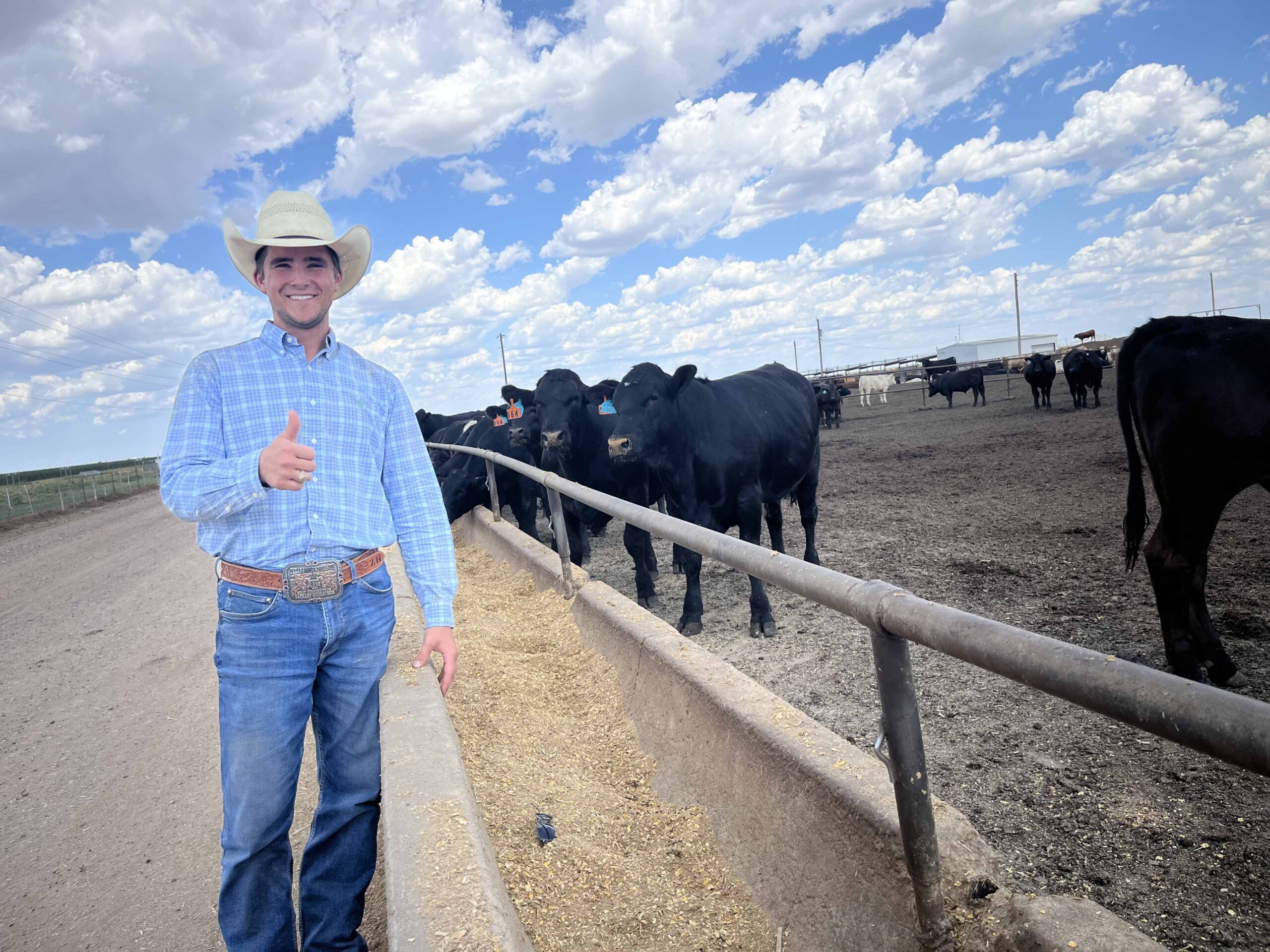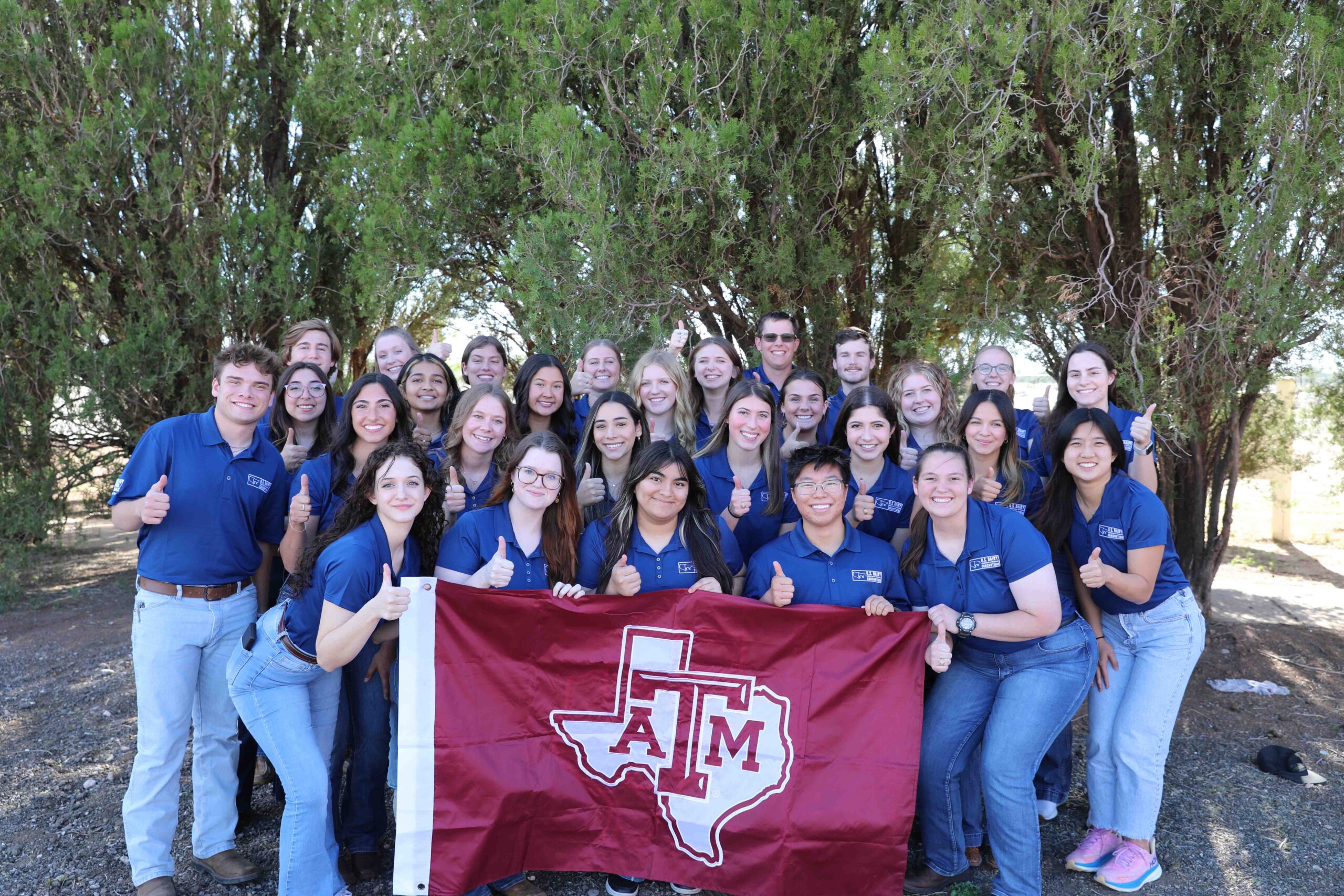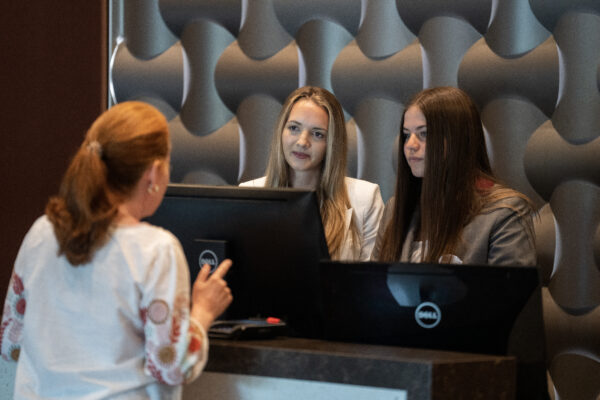Doctoral student preserves the past with tomorrow’s technology
Arpit Shah revolutionizes heritage tourism and brings history to life with augmented and virtual reality
Imagine a world where you can stand amidst ancient ruins and watch history unfold around you — where the crumbling walls of a long-forgotten brewery reconstruct themselves before your eyes, or where the footprints of dinosaurs transform into life-size creatures roaming the landscape.
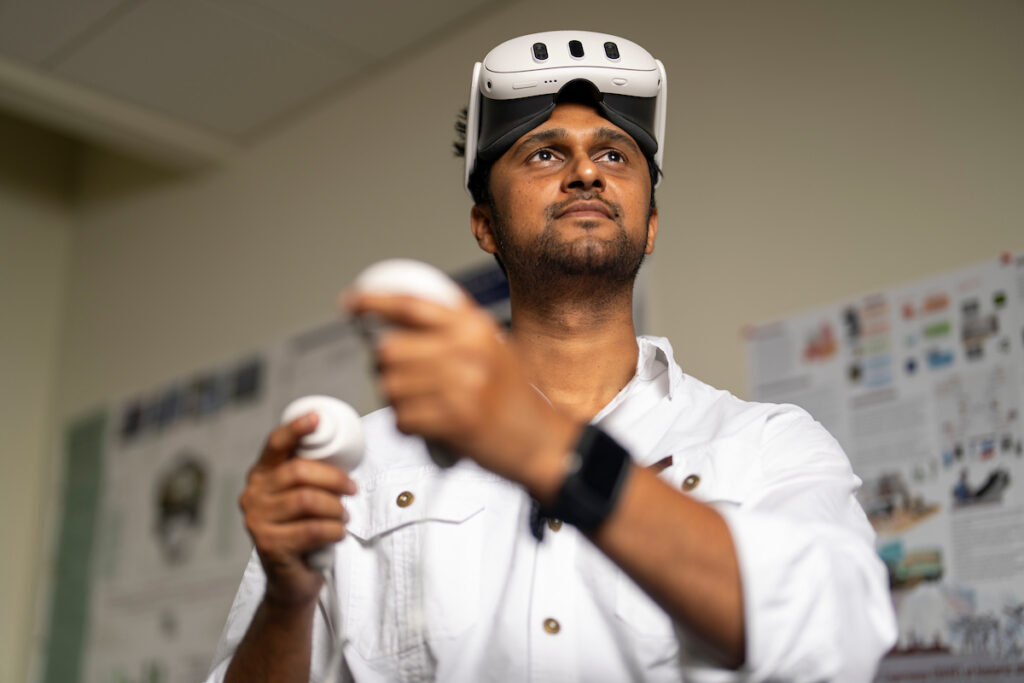
Thanks to the pioneering work of Arpit Shah, a doctoral student in the Texas A&M College of Agriculture and Life Sciences Department of Hospitality, Hotel Management and Tourism, this vision is becoming a reality.
By integrating augmented reality, AR, and virtual reality, VR, into visitor experiences, history becomes accessible and engaging, especially for younger audiences and those with physical limitations.
At the forefront of integrating AR and VR into heritage tourism, Shah is transforming static historical sites into dynamic, immersive experiences. His work breathes new life into the past and paves the way for a more engaging and accessible future in tourism.
“I want to transform passive visits into active, educational experiences that resonate deeply with visitors,” he said.
A passion ignited in India
Shah grew up in Pune, India – a city steeped in history with ancient forts and colonial-era architecture. His fascination with the past was nurtured from a young age. His early interest in architecture blossomed into a passion for heritage conservation as he recognized the profound link between architecture and the visitor experience.
“I developed a deep appreciation for the stories preserved within historic sites,” he said.
Shah earned his undergraduate degree in architecture from Pune University and focused on architectural conservation while earning his master’s degree. Numerous field trips and visits to historic sites deepened his curiosity about how people engage with history.
“I became passionate about enhancing these connections, striving to make visitor experiences more immersive, meaningful and transformative,” Shah said. “I wanted to turn historical sites into dynamic stories rather than static monuments.”
A game-changing decision
Choosing Texas A&M University for his doctorate was a pivotal moment in Shah’s academic journey. He found a program in the Department of Hospitality, Hotel Management and Tourism that aligned perfectly with his vision.
“What excited me the most was the program’s dedication to adopting technology like AR and VR to enhance how people connect with historic sites,” he said.
Shah also found a mentor who shared his passion in associate professor Courtney Suess-Raeisinafchi, Ph.D., who has a strong background in architecture like Shah.
“Dr. Suess’ expertise in blending architecture with hospitality and tourism perfectly aligned with my goals,” he said.
The program and Suess offered Shah a unique opportunity to transform tourism experiences. He also received invaluable support from other professors in the department like John Crompton, Ph.D., University Distinguished Professor; Tazim Jamal, Ph.D., professor; and Brian King, Ph.D., department head, whose advocacy and mentorship led to Shah being awarded the 2022 Elizabeth Crompton Scholarship and 2023-2024 Jake Hershey Fellowship in Natural Resource Conservation.
“These awards have significantly contributed to my research in sustainable tourism and digital heritage, and I am deeply grateful for the department’s unwavering support and guidance,” he said.
Preserving history for all
One of Shah’s most notable projects is his work with the Texas Historical Commission at the Kreische Brewery State Historic Site. During his internship, Shah developed a 3D virtual reconstruction of the brewery’s architecture, allowing visitors to use AR to overlay the historical structures onto the existing ruins and experience the Kreische Brewery as it was in 1849.

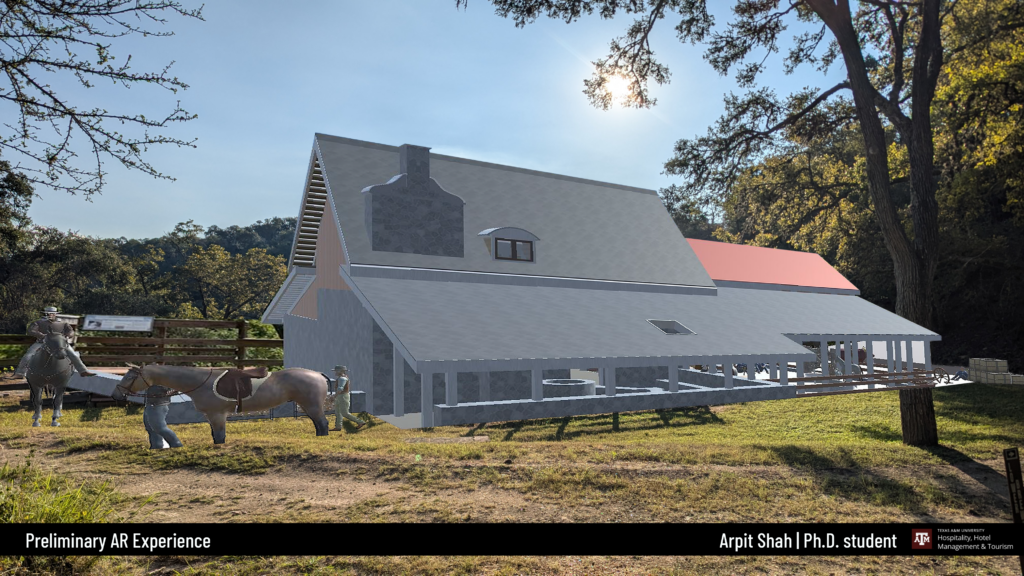
“The technology allows visitors to explore virtual reconstructions complete with historical characters, antique furniture and the bustling activity of the brewing process,” he said.
At Dinosaur Valley State Park, Shah’s work transports visitors back millions of years. Using handheld devices, visitors can see life-sized virtual models of sauropods and Acrocanthosaurus superimposed over real dinosaur footprints along the Paluxy River.
“Imagine the excitement on your kids’ faces as they explore alongside life-sized dinosaurs from the Jurassic era,” Shah said. “The technology turns the experience with history into an unforgettable adventure.”
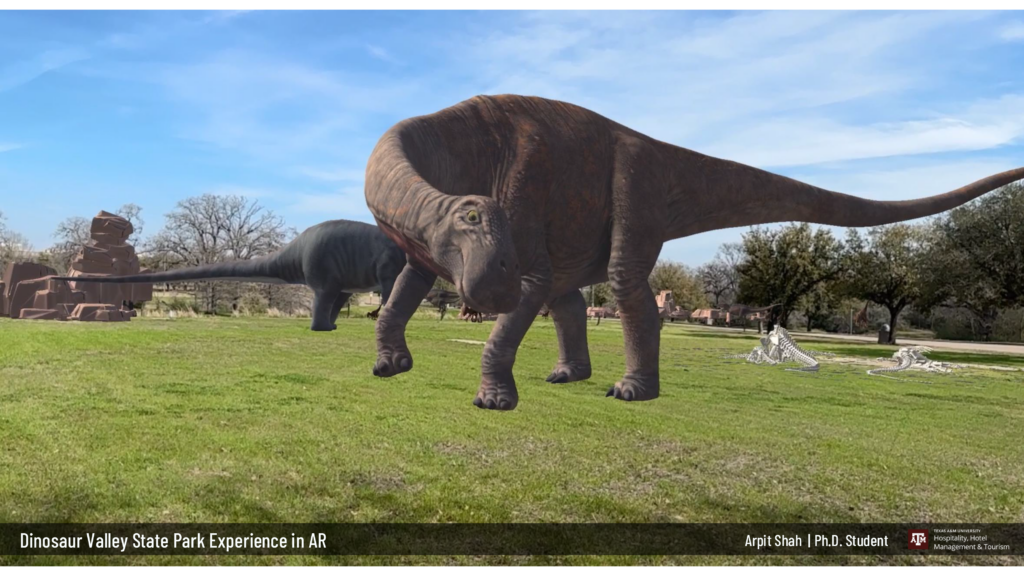
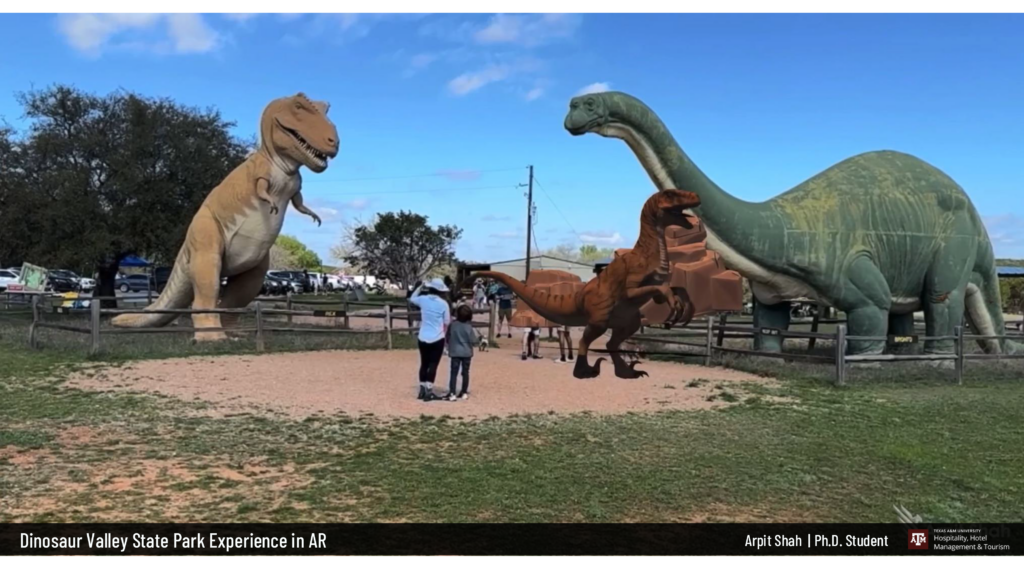
Shah also enhanced the visitor experience at the Brazos Valley Veterans Memorial Park in College Station. His Digitally Augmented Visitor Experience project used digital reconstructions, audio guides and interactive content to bring pivotal moments of the American Civil War to life. Through this immersive technology, Shah offers visitors a vivid glimpse into America’s past, blending storytelling with modern innovation.
But Shah’s creativity doesn’t stop with time travel in Texas — it spans the globe. His Phoenix of Venice project at St. Mark’s Campanile in Italy transformed traditional tourist brochures into interactive AR experiences. Through augmented reality, visitors can explore the campanile’s rich history, from its collapse to its restoration, all on their own devices.
A vision for the future and the past
As innovative and fascinating as Shah’s projects are, the impact of his research extends beyond academic boundaries; it directly influences how historical sites are interpreted and experienced. Upon completing his doctorate, Shah aims to develop AR/VR applications to revolutionize visitor engagement at heritage sites worldwide.
A key focus for Shah will be integrating AR and VR to address pressing challenges such as overtourism and physical preservation constraints.
“Virtual reconstructions can provide rich, engaging experiences while reducing physical strain on fragile sites,” he explained.
Collaboration with museums, cultural institutions and educational organizations is another priority for Shah. By incorporating AR/VR technologies into school curricula and museum exhibits, he aims to foster a deeper appreciation for history and conservation among younger audiences.
I wanted to turn historical sites into dynamic stories rather than static monuments.
Arpit Shah
Department of Hospitality, Hotel Management and Tourism doctoral student
Shah’s ultimate career goal is ambitious yet grounded in his passion for heritage conservation.
“I envision establishing a center dedicated to digital heritage conservation,” he said. “By collaborating with experts in heritage, technology and tourism, the center will offer training programs and resources that can be adapted by heritage sites globally.”
He plans to work with international organizations such as the United Nations Educational, Scientific and Cultural Organization, the World Tourism Organization, the Texas Historical Commission and the National Park Service to implement these technologies at important cultural sites.
“I am committed to contributing to the academic field by conducting research, publishing my findings and teaching courses on digital heritage interpretation,” Shah said. “I hope to make a lasting impact on heritage tourism globally and bring history to life for everyone.”

